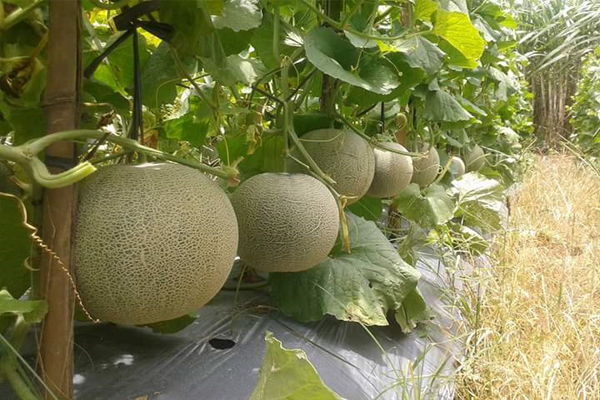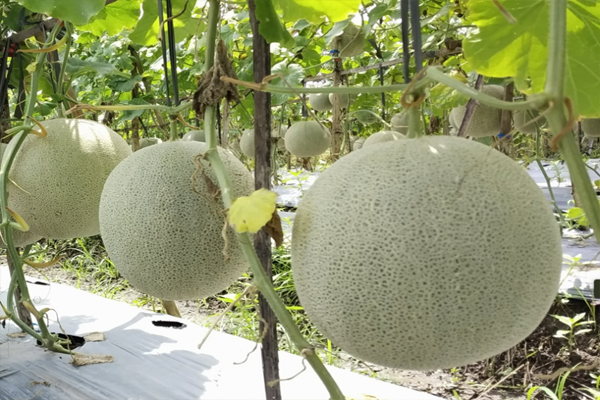Description :
Melon plants are annual trailing vines with lobed leaves and tendrils for climbing. They produce yellow, white, or greenish flowers that are typically monoecious, meaning separate male and female flowers are borne on the same plant.
Characteristics:
Fruit: The fruit of Cucumis melo varies widely in size, shape, color, and flavor depending on the cultivar. Common types include cantaloupe, honeydew, and muskmelon. Melons have a sweet, aromatic flesh encased in a thick rind. The flesh may range in color from orange, green, yellow, to white.
Cultivation: Melons thrive in warm, sunny climates with well-drained soil. They are typically grown as annuals, with seeds sown directly in the garden or started indoors and transplanted. Melon plants require consistent watering and fertilization throughout the growing season.
Harvesting: Melons are harvested when they reach maturity, as indicated by changes in color, fragrance, and texture. They are typically picked by hand to avoid damage to the fruit. Harvesting time varies depending on the cultivar and growing conditions.
Nutritional Value:
Melons are low in calories and fat but rich in essential nutrients, including:
Vitamins : vitamins A and C, which are important for immune function, skin health, and vision.
Minerals : They contain potassium, which helps regulate blood pressure, as well as small amounts of magnesium and folate.
Water Content : Melons have high water content, making them hydrating and refreshing.
Project information
- Category :the Cucurbitaceae
- variety : Cucumis melo L.
- Project date: 01 March, 2020
Cucumis melo L. :
Cucumis melo, commonly known as melon, belongs to the Cucurbitaceae family, which also includes cucumbers, pumpkins, and squashes. It is a species of flowering plant cultivated for its sweet, juicy fruits. Melons are believed to have originated in Africa and Asia, with various cultivars developed over centuries of cultivation.




